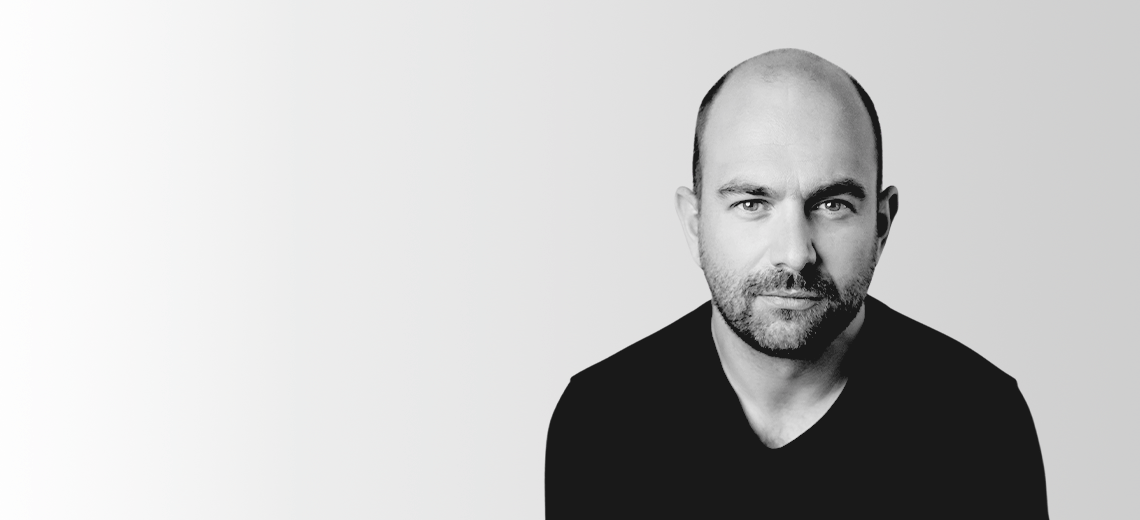Subscribe: Apple Podcasts | Stitcher | Google Play | Spotify
In his 13 years working on the events production side of IMG, Dominic Kaffka — now svp of IMG Fashion Events — has not only had an insider’s view of New York Fashion Week’s ongoing transformation, but he’s also had a hand in steering its course.
For example, he spent the past two show seasons fueling the event’s digital acceleration by ensuring the show went on, so to speak, without physical shows. In September 2020 and February 2021, the bi-annual event was largely carried out virtually, due to the pandemic.
“We had 20-25 guests [per show] — but for us, it was really important to not miss a full New York Fashion Week,” Kaffka said on the latest Glossy Podcast. “Most of our clients who chose not to do a live fashion show with guests came up with much more creative ways to present their collections. A lot of designers did lookbook shoots, a lot of designers produced very elevated fashion films on a cinematic level — their budgets shifted from putting on a big show to putting on a big digital content production.”
But now, he said, “People are shifting their budgets, their intentions and their planning back to live events.”
Ahead of New York Fashion Week, which kicked off on Wednesday, Kaffka discussed how designers will strike a physical-digital balance this season and to what extent the event will be democratized moving forward.
Below are additional highlights from the conversation, which have been lightly edited for clarity.
Ad position: web_incontent_pos1
On the end of dueling fashion calendars
“I don’t think there’s ever been a war [between the CFDA and IMG]. In the end, we all work for the same objective, and that is giving American fashion the stage and the audience that it deserves. But of course, over the last year, we’ve been seeing consumers spending less money on clothing. That affects each designer’s sales. So it’s even more important that the two organizations really in charge of helping designers succeed in the U.S. closely work together and collaborate in the best possible way. [We want to] support these designers doing this really challenging year.”
Welcoming consumers to NYFW
“Fashion would be well-advised to open itself up to more consumers, because those are the people who actually buy the pieces, in the end. And it brings a really fun and nice vibe if you have a few fans on-site — a few people who are really excited to get access to shows that traditionally have never been accessible for consumers. You’ve always had to be invited [as] an editor, a stylist or someone writing for the press. It’s really an amazing time to work in this industry to witness how it’s slowly opening up to everyone who’s really interested. It’s a bit of a democratization, and we’re really proud that we are one of the first companies really connecting designers and consumers, and giving them access to the shows… It’s never been easier to access New York Fashion Week than it is now.”
The pivot to fashion festival
Ad position: web_incontent_pos2
“You see other entertainment businesses’ festivalization, right?… I don’t think it’s the season yet to do a gigantic [fashion] celebration. But in the future, in terms of what the next few seasons or years will bring, the clash between entertainment, music and fashion is definitely a big topic. And you see this in big shows that are happening in Paris or during the resort seasons, when the whole industry is traveling: There are more and more collaborations between musical artists and high-end fashion houses, even. And that’s a trend we’ve been following closely. Obviously, New York, specifically, has so many creatives to offer. And every season, there are a few really great collaborations between designers and street artists or musicians that we follow closely. And I think that’s the next big thing, if it’s not here already… Through the democratization and the fact that many more consumers are gaining access to these shows and events and the week, it’s definitely going into more of a festival direction. And there are so many more possibilities now to present a collection; rather than just having a straight runway, you can do presentations, you can do AR or VR experiences. There are a lot of experiential ideas that people are throwing around. There are just more [consumer] touchpoints for designers, in the end — [options] other than just having them sit down and watch a show. That’s the future, when it comes to consumer interaction.”
Designer demand
“In May or June, we saw an explosion of requests — [designers] who came to us, asking, ‘Can you produce our show? Can you find us a location? We want to do something.’ Everyone is really optimistic and extremely excited about this season. Our schedule here at Spring Studios is nearly overbooked; there are no [show] slots left in any of the venues we have here. The same goes for all the shows that IMG Focus produces offsite — offsite, we’ll produce 3-5 shows on Sunday. So we’re really busy. I think the business is completely back to work, and everyone is excited to see each other again. Some people are doing smaller dinners or after-show cocktails outside, which is something that just did not happen over the last year. So to us, it feels like a little bit of a comeback season after these very challenging 16-18 months.”




